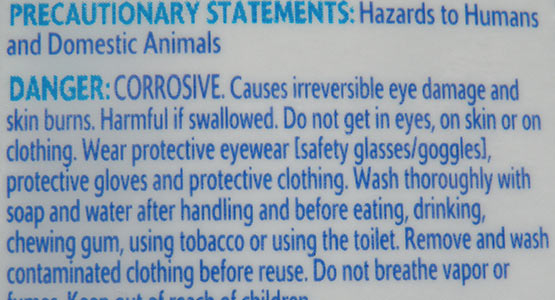Spring cleaning. You love it or dread it. Either way, it always proves to be a satisfying endeavor on the back end of a chore-filled weekend. Kitchen and bathroom surfaces sparkle. Windows are crystal clear. The dirt and clutter that accumulated over winter gives way to pristine woodwork, gleaming floors and free space. Ahhh that fresh smell… it’s all good, right?
Maybe not. When working to get that “spring clean” smell, it can be hard to wrap your head around potential health risks along the way. (There are some dirty secrets in the household cleaning products industry.)
You use cleaning products all the time. It is second nature to grab one out of the cupboard and go. And while you might take extra precautions when using an oven-cleaning product, there are dozens of other products you spray, squirt or spread around your body and home without a second thought.
In Ayurveda, anything you put in, on or around your body functions as a medicine (think nutrient) or a poison. This most definitely includes the things you are exposed to in your home environment—like residues, fumes and particles. You might take the time to read a soup can or cereal box label, but after years of using the same countertop cleaner—who thinks to read that label? Even if you did, would you be able to determine all of the potential consequences of using the product?
As it ends up, this knowledge is hard to come by. According to Environmental Working Group (EWG), a non-profit organization focused on environmental and public health, consumers are often in the dark about what’s in their cleaning products. In its “Cleaners Hall of Shame” report, EWG states, “Though many Americans assume government bodies oversee the safety of the multi-billion-dollar household cleaning products industry, it is largely unregulated.”
On its website, EWG sheds more light on the topic: “Manufacturers can use nearly any substance they want, even those known to be health or environmental hazards, in cleaning products. And they can hide information about virtually all their ingredients from consumers.”
EWG believes that cleaning product labels do not give consumers enough information about ingredients to enable them to make informed decisions on which ones are safer and which ones pose health risks. A growing body of evidence suggests that the chemicals and toxins in these products are tied to a host of serious accidents, and diseases and chronic conditions, including:
In leveraging the power of information, for a little donation EWG offers an invaluable resource in its “Guide to Healthy Cleaning.” This online tool provides an assessments for 2,109 products, 197 brands and more than 1,000 ingredients. Bookmark it and visit often. Discover who’s “green-washing” and what common brands and products earn the lowest and highest grades. If your goal is to stay healthy by bringing more consciousness to your purchasing decisions, this will prove to be an eye-opening exploration.
At Ayureka, we believe simple changes can bring about important shifts. It all begins with consciousness. Taking a minute to think about how your everyday decisions impact your wellbeing and the wellbeing of world around you can have a profound impact. As you embark on this year’s spring cleaning, this practice may serve you well.


